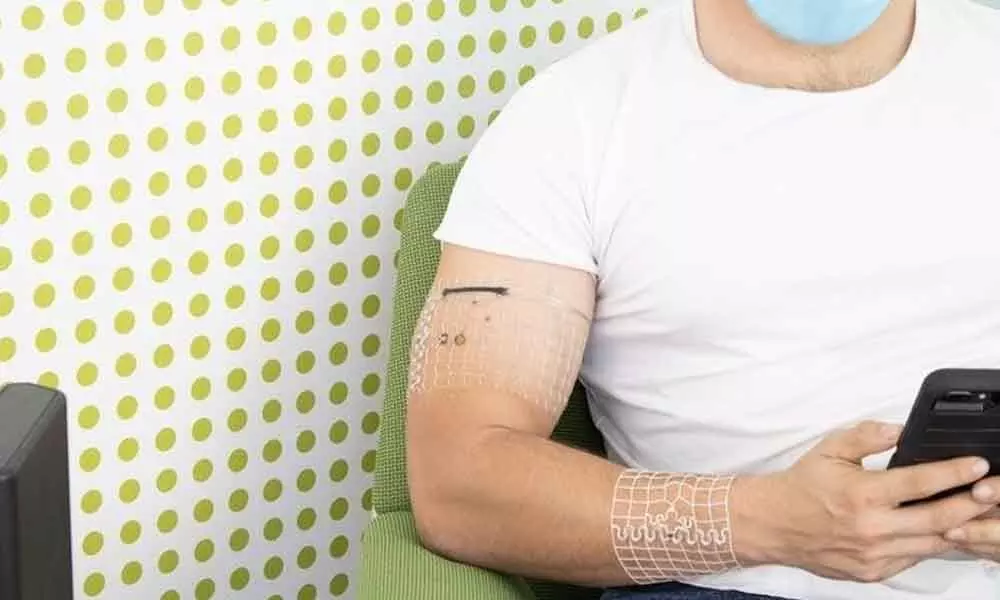This 3D-printed wearable can better track health!
We introduce a completely new concept of tailoring a device directly to a person and using wireless power casting to allow the device to operate 24/7 without ever needing to recharge - Gutruf, member of the University of Arizona’s BIO5 Institute
image for illustrative purpose

New York: A team of US engineers has developed a wireless wearable that may never need a charge, is custom-made to fit individuals and could mean massive improvements in the monitoring and treatment of diseases, the testing of new drugs and the ability to track personal health.
Wearable sensors to monitor everything from step count to heart rate are nearly ubiquitous. However, for scenarios such as measuring the onset of frailty in older adults, promptly diagnosing deadly diseases, testing the efficacy of new drugs or tracking the performance of professional athletes, medical-grade devices are needed. University of Arizona engineers have now developed a type of wearable they call a "biosymbiotic device", which has several benefits.
Not only are the devices custom 3D-printed and based on body scans of wearers, but they can operate continuously using a combination of wireless power transfer and compact energy storage, said the team led by Philipp Gutruf, assistant professor of biomedical engineering, in a paper published in the journal Science Advances. "There's nothing like this out there. We introduce a completely new concept of tailoring a device directly to a person and using wireless power casting to allow the device to operate 24/7 without ever needing to recharge," said Gutruf, a member of the university's BIO5 Institute.
Current wearable sensors face various limitations. Smartwatches, for example, need to be charged, and they can only gather limited amounts of data due to their placement on the wrist.
"If you want something close to core body temperature continuously, for example, you'd want to place the sensor in the armpit. Or, if you want to measure the way your bicep deforms during exercise, we can place a sensor in the devices that can accomplish that," said Tucker Stuart, a doctoral student in biomedical engineering and first author on the paper. During the test, participants wore multiple devices, tracking exercise intensity and the way muscles deformed with fine detail. The devices were accurate enough to detect body temperature changes induced by walking up a single flight of stairs.
Currently, some wearables used by researchers are patches that stick to the skin, but they come off when skin goes through its normal shedding process, or sometimes when a person sweats. Even highly sophisticated wearables used in clinical settings, such as ECG monitors, face these issues. Also, they aren't wireless. The device that Gutruf's team has introduced uses no adhesive, and it receives its power from a wireless system with a range of several metres.
The device also includes a small energy storage unit, so that it will function even if the wearer goes out of the system's range, including out of the house.
"These devices are designed to require no interaction with the wearer," Gutruf said. "It's as simple as putting the device on. Then you forget about it, and it does its job."

